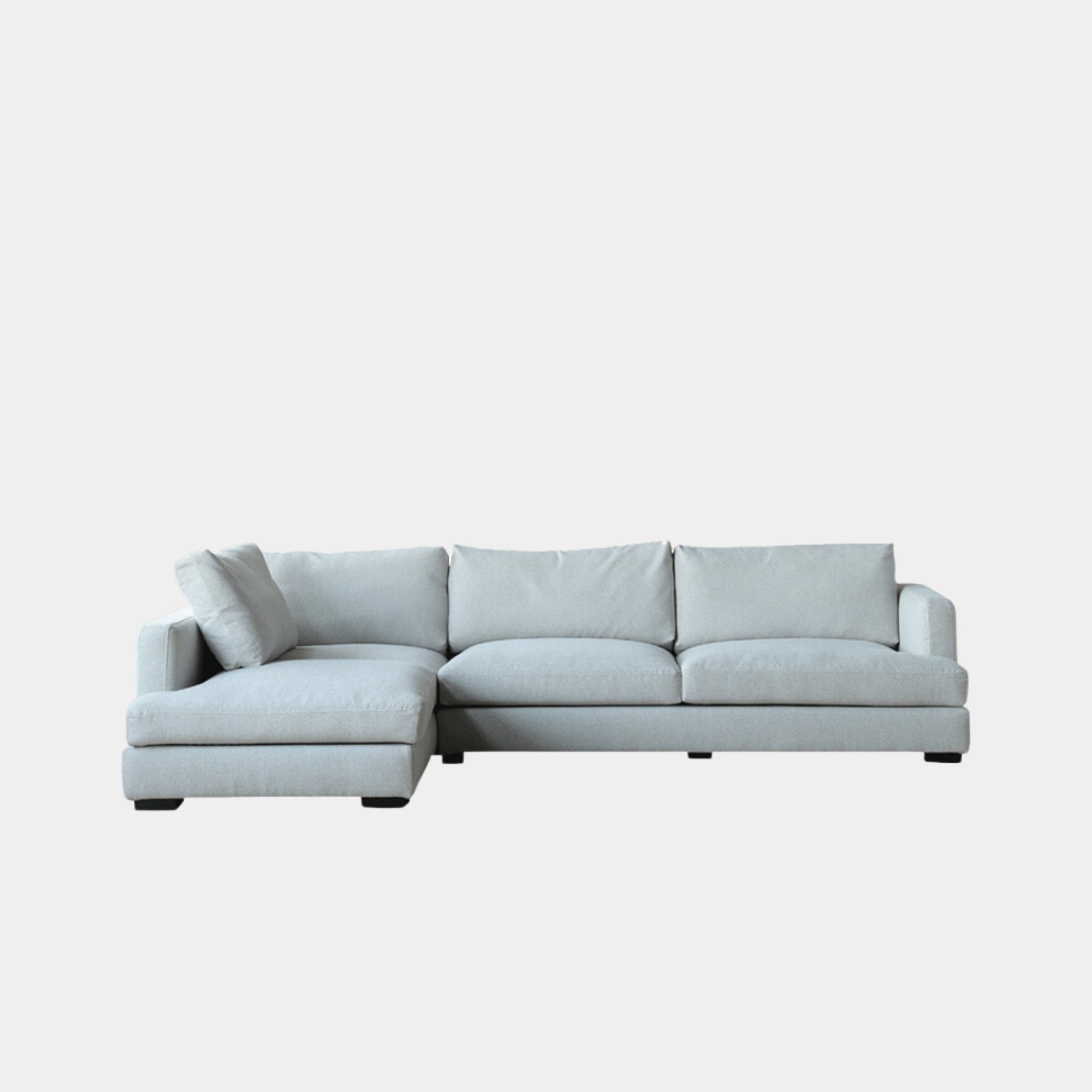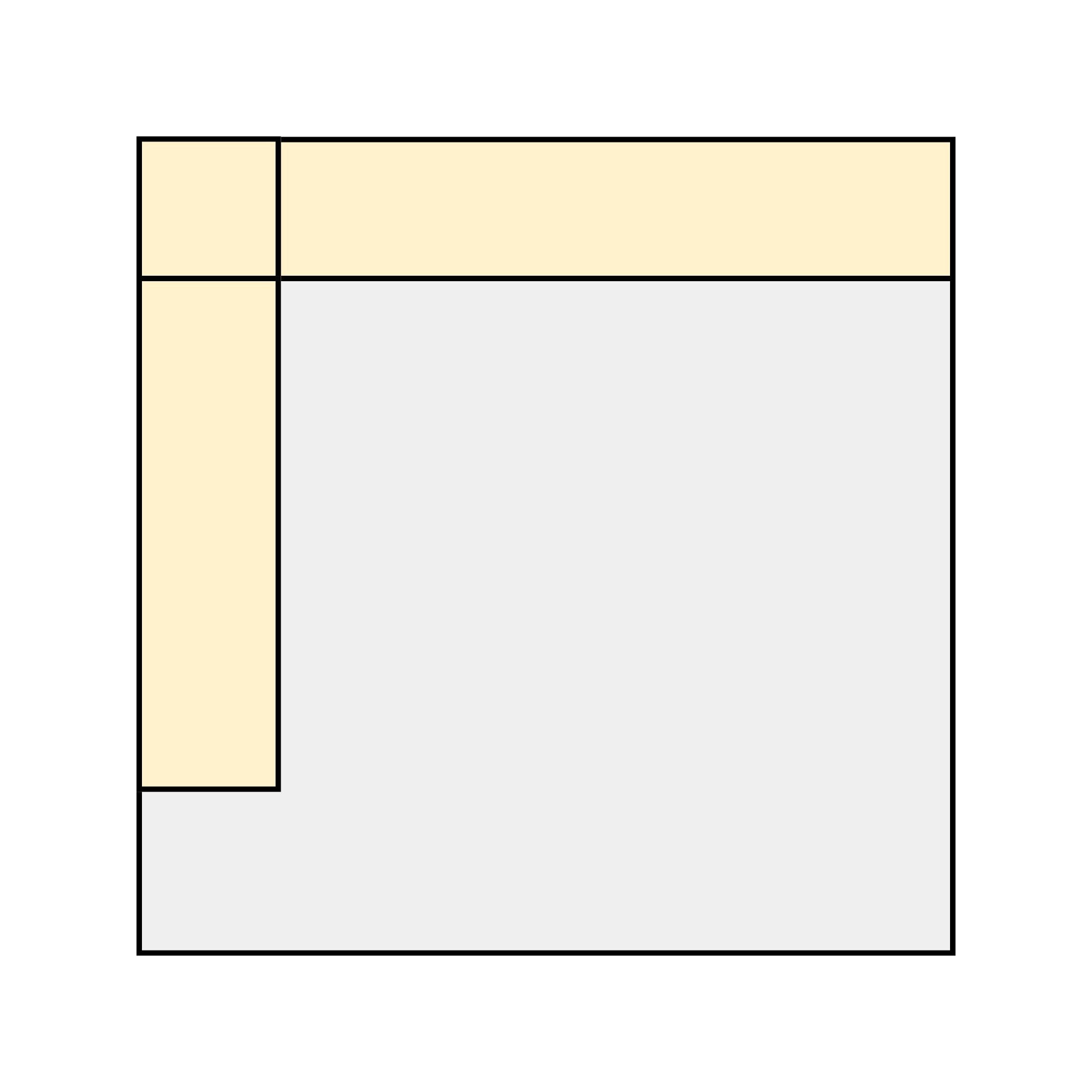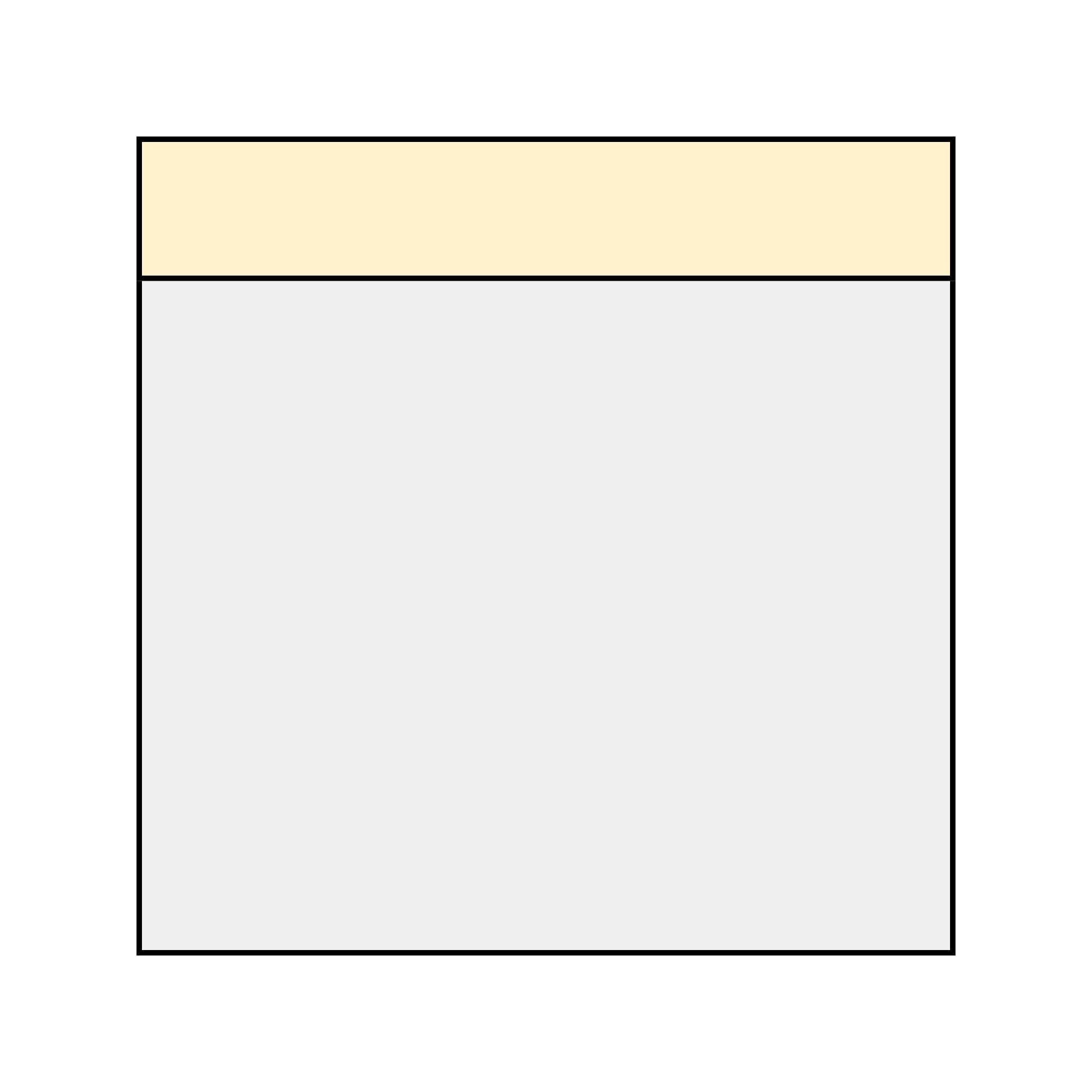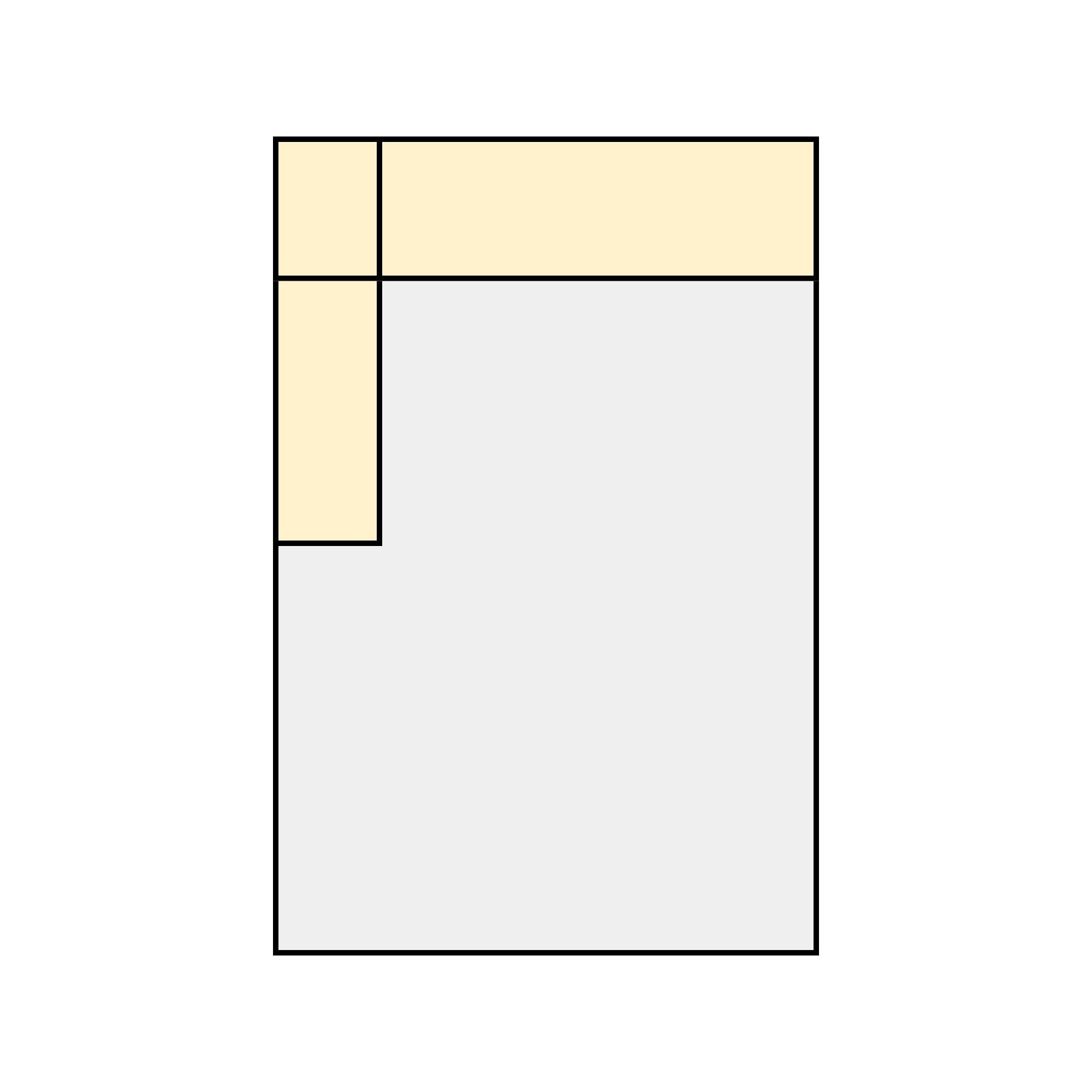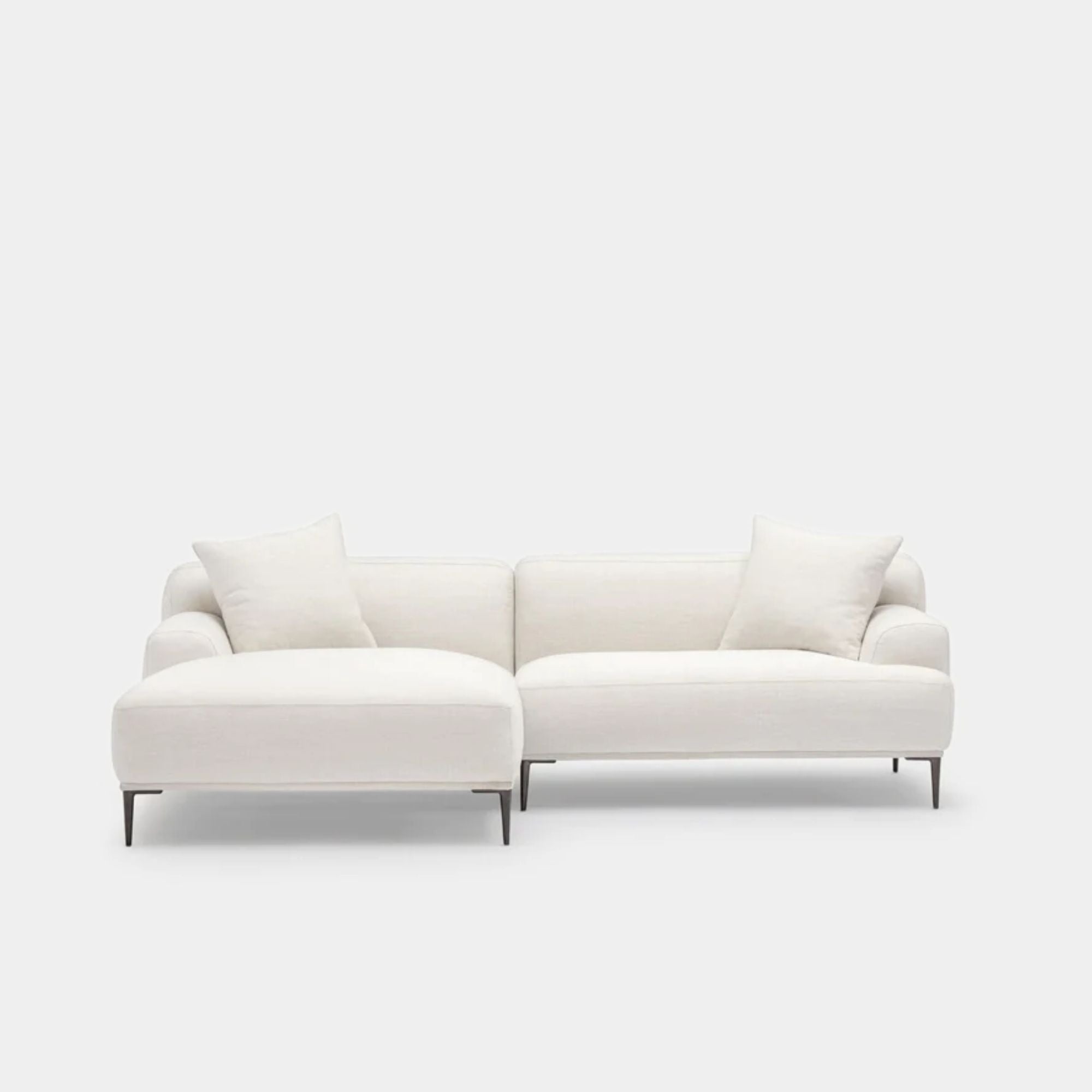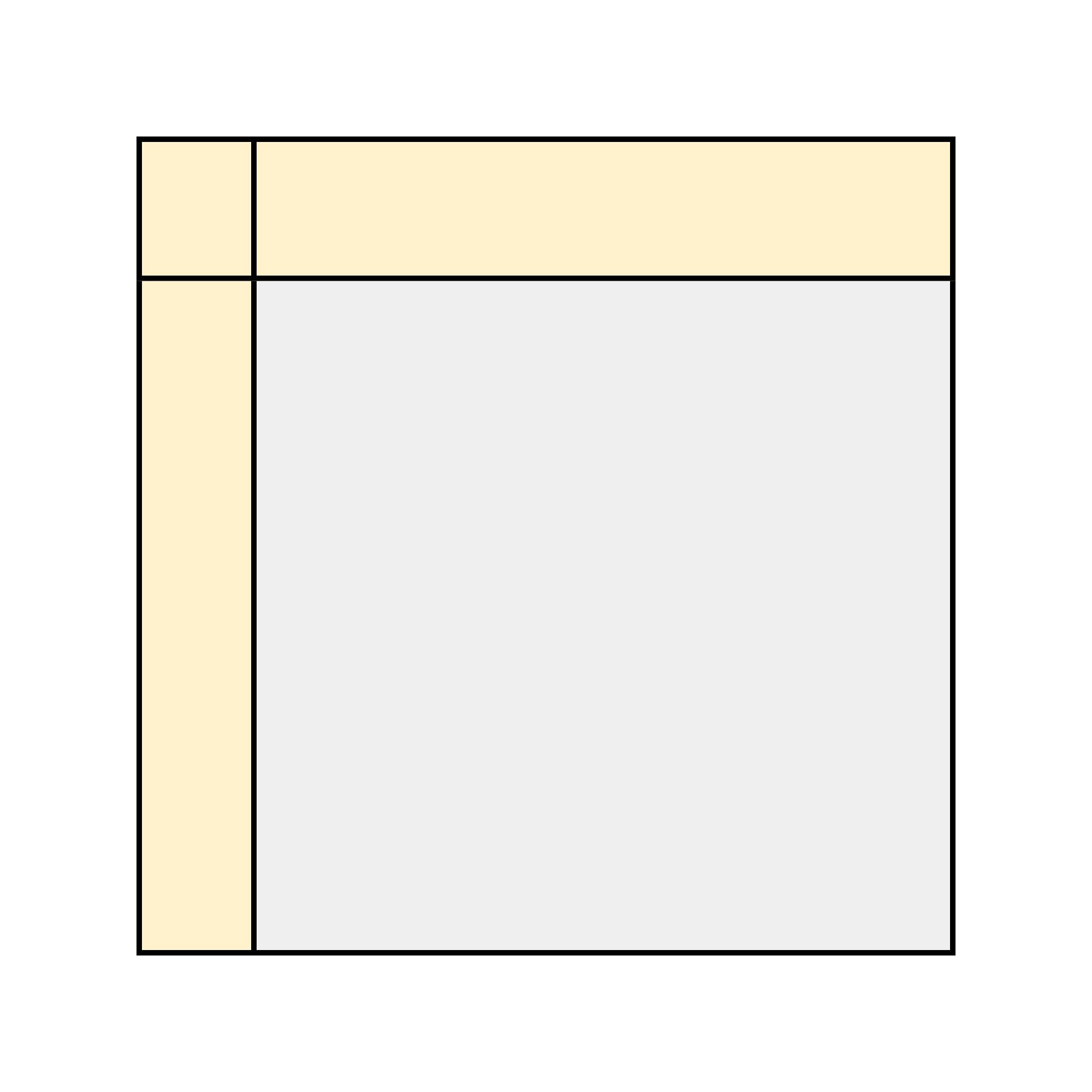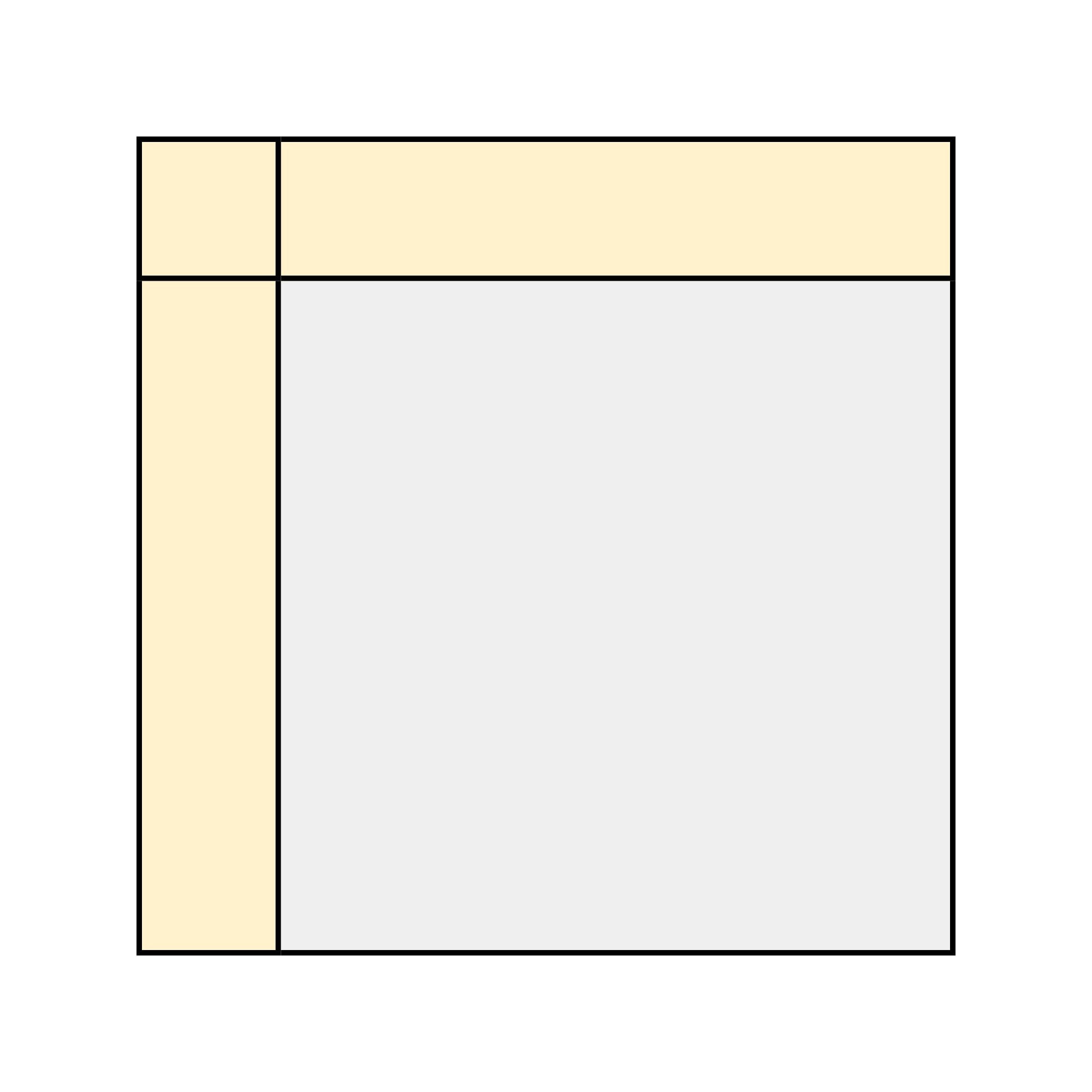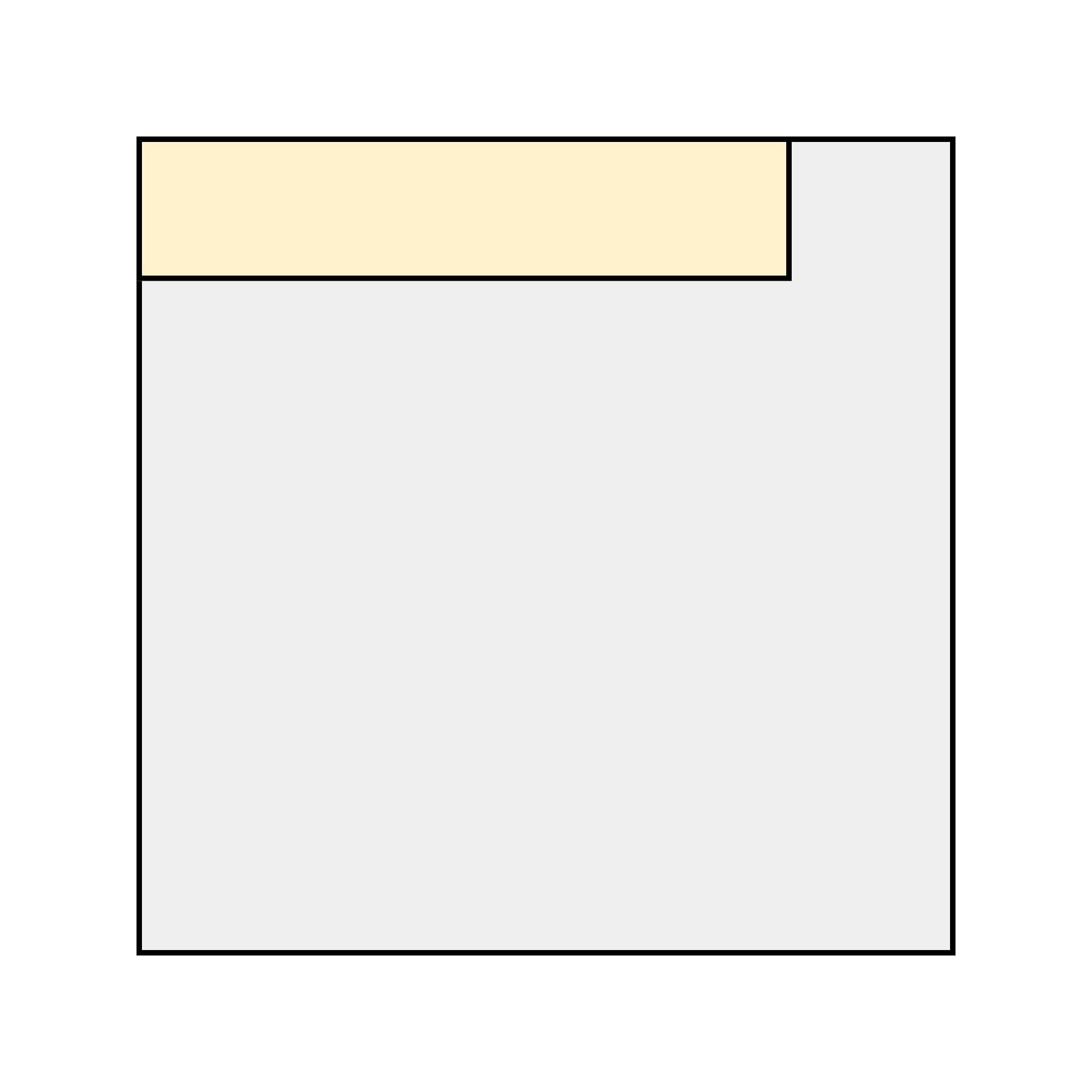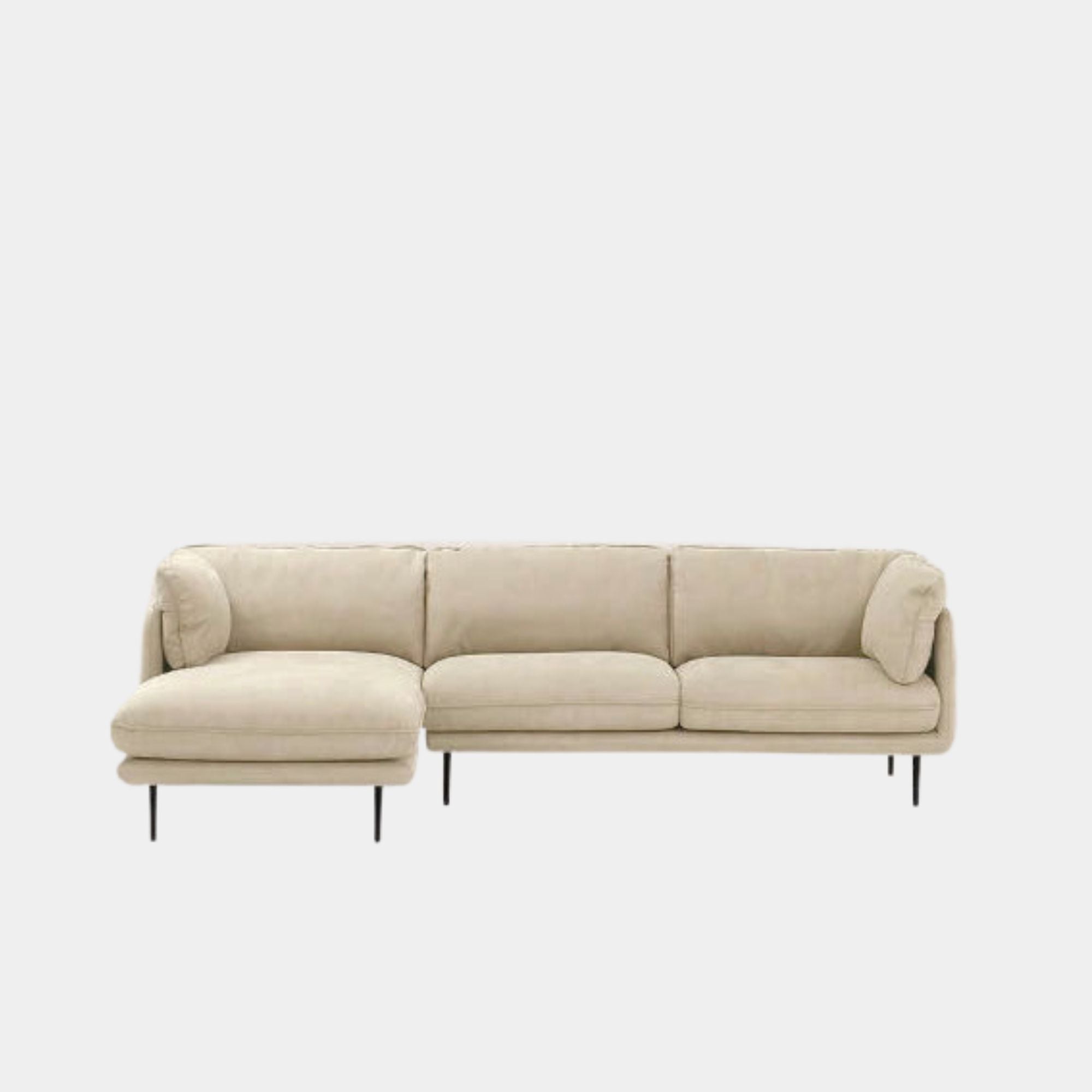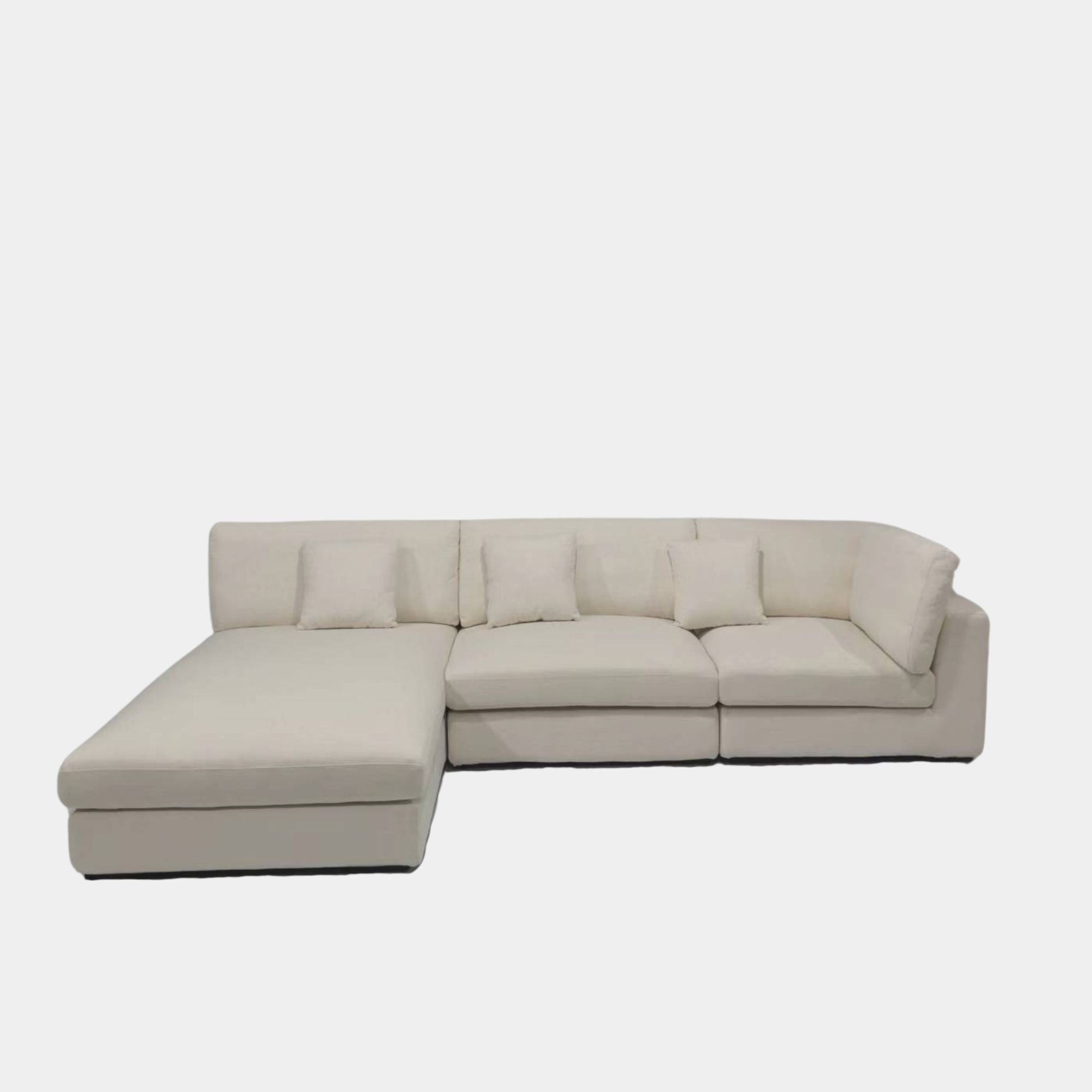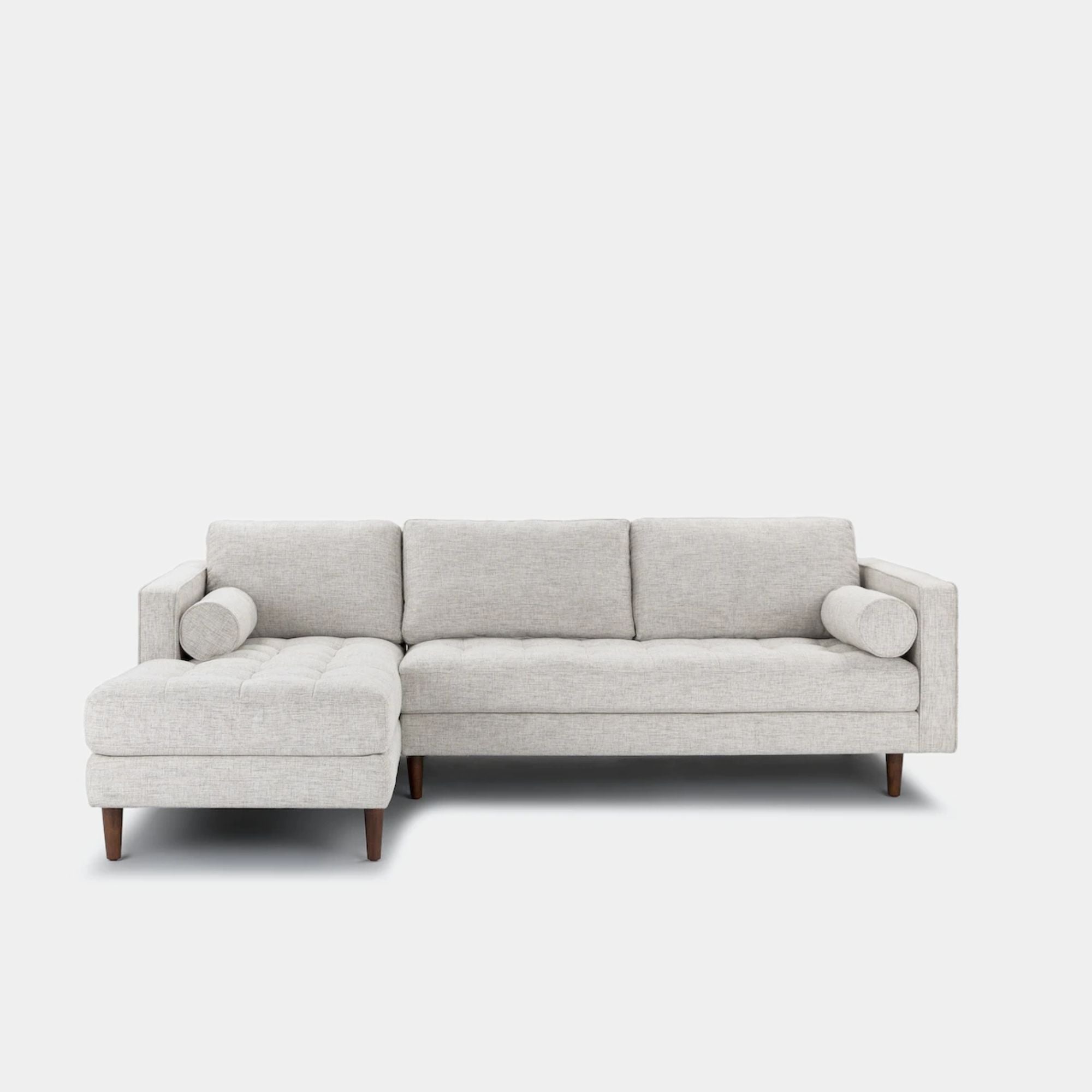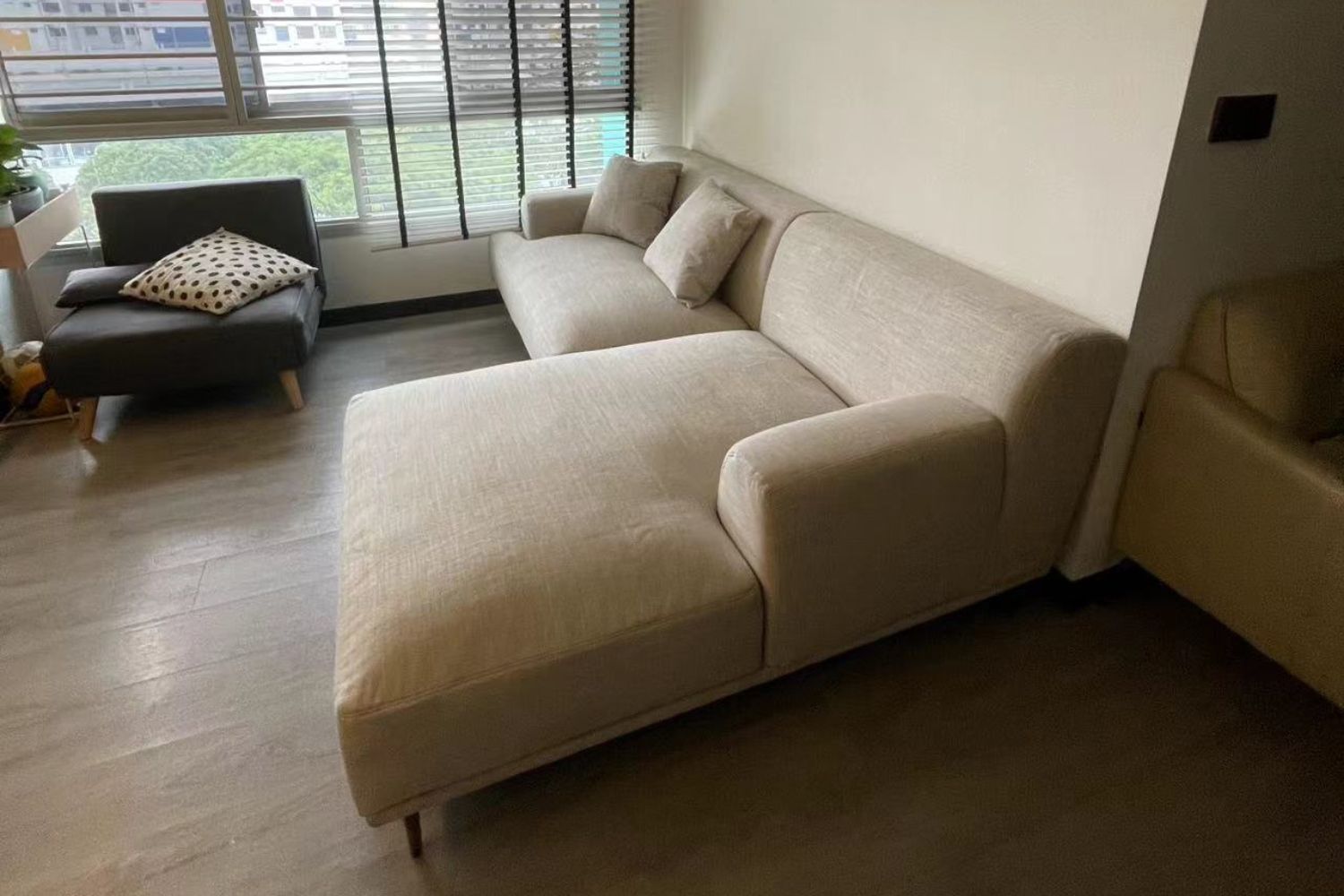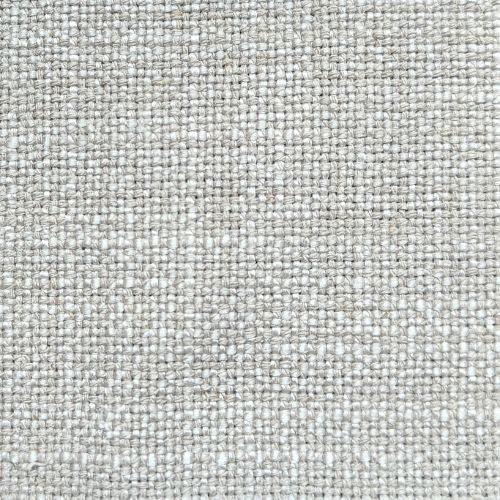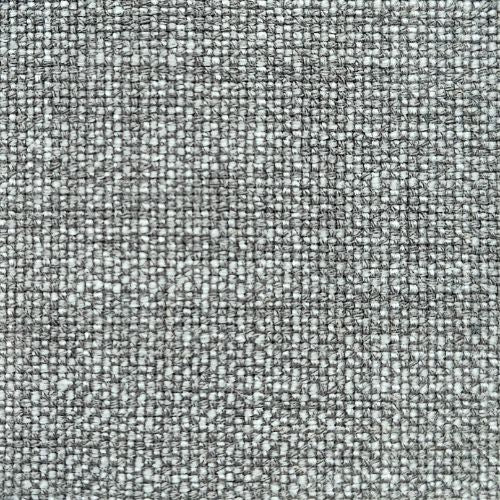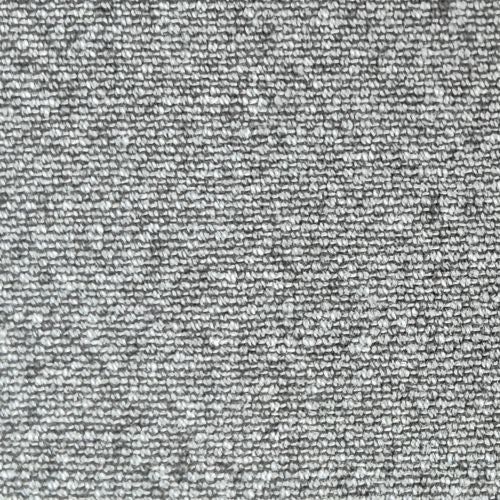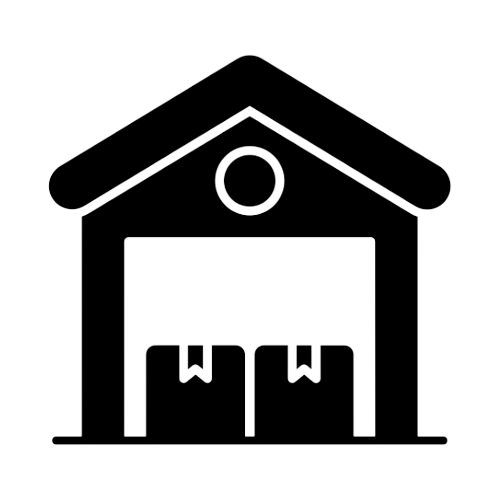Browse through some common questions that people may have. Reach out if still in doubt!
Guide
Are there any dimension restrictions for L shape sectional sofas?
Yes, the main restriction is from an aesthetic perspective.
The chaise section of the L shape sectional sofa should not occupy more than 45% of the total width of the sofa.
With most chaise segments around 100 cm in width, L shape sectional sofas are typically 230 cm wide or above.
Should I choose a left facing or right facing sectional?
This depends on your space planning.
In compact living rooms, we recommend placing the sectional in a corner with the chaise near the window to maximize space.
Alternatively, if you want the sectional to divide different areas of your living space, place the chaise where the segmentation occurs.
Should I choose an L shape sofa or a sofa with ottoman?
The decision depends on flexibility and space. A sofa with an ottoman offers more versatile seating arrangements since the ottoman can be moved. This added flexibility might be a better choice in compact spaces.
On the other hand, an L shape sectional offers a cohesive design with fixed lounging space. For larger rooms or if you prefer a structured layout, the L shape might be the better choice.
How to choose sectionals for small spaces?
Opt for L shape sectional designs that feature slim armrests, light-colored upholstery, and compact designs as:
- Slim armrests (under 15 cm) maximize seating space without making the sofa feel bulky
- Light-colored upholstery makes the space feel more open and airy
- Compact designs like a 2-seat cushion L shape instead of a 3-seat cushion model look more proportionate and aesthetically pleasing in smaller rooms
How many people can sit on your L shape sectional sofa?
Many of our sofas are modular in design, allowing you to craft a sofa that fits your space and seating needs.
We offer options for 3 person L shape sectional sofas, perfect for small spaces, or larger configurations that can comfortably seat over 5 people, ideal for family gatherings.
You can co-create your L shape sectional sofa with us to perfectly suit your home.
What are the common sectional sofa configurations?
The most common sectional sofa configurations include:
- L shape or Corner sectional sofa: Perfect for corners, with one extended chaise
- U shape Sectional Sofa: Has two extended chaise sections, ideal for larger rooms and group seating
- Modular Sectional Sofa: Can be rearranged into various shapes and sizes, offering flexibility
- Curved Sectional Sofa: A rounded, elegant shape, typically used for more luxurious or unique seating arrangements
What is the difference between a modular sofa and sectional sofa?
A sectional sofa is typically a pre-configured design, such as an L shape or U shape, with fixed connections between sections.
In contrast, a modular sofa consists of individual pieces or sections that can be rearranged to create different seating configurations, offering more flexibility and customization.
What is considered a deep seat sofa and is it right for me?
A deep seat sofa typically has a seat depth of 56 cm or more from the front edge to the back cushion. This allows for a more relaxed, lounge-friendly seating position, as it gives ample room to sit back and stretch out your legs. Standard seat depths are usually between 45 to 56 cm, so anything beyond this is considered deep.
A deep seat sofa is great for those who prioritise comfort and want a sofa suitable for lounging. It works especially well for taller individuals who need more seat depth to sit comfortably. If you have a larger living area and like to relax or entertain guests, a deep seat sofa can be an excellent choice.
While deep seat sofas are great for comfort, they might not be ideal for smaller rooms, as they can take up more floor space. They may also feel too deep for shorter individuals, making it difficult to sit upright with feet touching the floor. Additionally, if you prefer more formal or upright seating, a deep seat sofa might not provide the support you’re looking for.
What is linen fabric?
Linen fabric is a natural textile made from the fibers of the flax plant. Known for its breathability, durability, and lightweight feel, linen is highly valued for both clothing and home furnishings like bedding, curtains, and upholstery. Linen has a slightly crisp texture that softens with use and washing, and it naturally wicks moisture, making it comfortable in warm weather or humid conditions.
In home decor, linen is often chosen for its classic, relaxed look and its environmentally friendly qualities, as flax requires less water and fewer pesticides than other fibres like cotton.
Although linen can wrinkle easily, this feature is often embraced as part of its laid-back charm. Linen fabric is also hypoallergenic, making it ideal for households with sensitivities or allergies. Its durability allows it to last for years, gaining character with time and use.
What sofa styles does linen fabric work well with?
Linen fabric is versatile and works beautifully with a variety of sofa styles, bringing an elegant, relaxed touch to living spaces:
- Slipcovered Sofas: Linen’s natural drape and slightly wrinkled texture suit slipcovered sofas perfectly, giving them a casual, inviting appearance. This combination works well for a laid-back, coastal, or farmhouse style.
- Modern and Minimalist Sofas: The simplicity of linen complements clean, modern sofa designs. Its light, airy quality enhances minimalist spaces, where the fabric’s organic texture adds subtle visual interest without overwhelming the design.
- Mid-Century Sofas: Linen pairs well with mid-century modern sofas, emphasizing their sleek lines and low profile. The natural tones of linen highlight the vintage aesthetic without overpowering it.
Linen’s breathable, hypoallergenic qualities make it ideal for both high-traffic family rooms and quiet spaces, bringing an understated elegance to any sofa style.
How to clean linen fabric?
Cleaning linen fabric requires gentle care to preserve its natural fibers and relaxed texture. Here are the best practices for keeping linen furniture fresh and in great condition:
- Regular Vacuuming: Use a vacuum with an upholstery attachment to gently remove dust and debris. Regular vacuuming prevents dirt from embedding in the fibers and keeps the fabric looking fresh.
- Spot Cleaning: For spills, quickly blot the area with a clean, dry cloth to absorb as much liquid as possible. Use a mild soap or upholstery cleaner diluted with water on a cloth to gently blot any remaining stain, being careful not to oversaturate the fabric. Test any cleaner on an inconspicuous area first.
- Avoid Excessive Water: Linen fabric is sensitive to water. Avoid over-wetting the fabric, as it may cause shrinkage or damage. When cleaning with water, blot gently and allow the area to air dry naturally.
- Professional Cleaning: For deep cleaning or persistent stains, consider professional upholstery cleaning to avoid damaging the fabric. Professionals have the right equipment and techniques to handle delicate linen fibers.
By following these steps, linen fabric can maintain its charm and durability, preserving its soft texture and classic appearance.
What is the benefit of choosing grey sofas?
Grey sofas offer a sleek, modern, and timeless look. The colour grey is often associated with balance, sophistication, and neutrality, making it a versatile choice for various interiors.
Grey can serve as an elegant backdrop for other colours, or it can stand out as a statement piece, depending on the shade and surrounding decor.
What design styles work well with grey?
Grey sofas blend seamlessly into a wide range of design styles, including:
- Modern and Minimalist: Light greys enhance the clean, understated look of modern and minimalist interiors.
- Industrial: Dark grey or charcoal tones complement the raw, edgy elements of industrial design.
- Traditional: Softer grey tones work beautifully in classic, traditional spaces, especially when paired with rich textiles and patterns.
- Scandinavian: Light grey sofas are a perfect match for Scandinavian decor, which emphasises simplicity, natural light, and a calm atmosphere.
What cushions work well with grey sofas?
Cushions in soft tones like white, cream, or blush pink offer a gentle contrast to grey sofas, creating a light and airy feel.
For more vibrant options, mustard yellow, navy blue, or teal can add depth and a pop of colour.
Metallic accents in silver or gold can also enhance the modern, luxurious feel of a grey sofa.
What rugs work well with grey sofas?
Neutral rugs in shades of white, light grey, or cream provide a cohesive look with grey sofas.
Textured or patterned rugs, such as geometric or abstract designs, can add visual interest to the room.
If you prefer a more natural feel, rugs made of jute or wool can complement the simplicity of a grey sofa.
What wall colour work well with grey sofas?
Neutral wall colours such as soft white, light grey, or beige create a seamless, calming backdrop for grey sofas.
For a more dramatic effect, deeper shades like charcoal or navy blue can contrast well with light grey sofas.
Alternatively, warm tones such as taupe or greige (a blend of grey and beige) can bring a sense of warmth and balance.
What if I couldn’t find the shade of grey such as taupe or light grey that I need?
If you're unable to find the specific shade of grey you're looking for, such as taupe or light grey, please contact us with a sample of the material you’d like to customise.
Whether it’s fabric or leather, we will coordinate with our supplier base to find a similar upholstery material for you.
